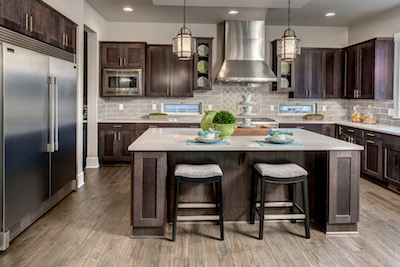Helping builders identify where to save money and where to invest is a large part of my efforts here at Builder Partnerships. A key element of that analysis is a new product feasibility exercise that I walk my builder clients through.
How it works
I ask a builder to take his best performing, most consistent plan. By that I mean I want a top seller that is a leader in the company’s profit-producing homes. Cost and sales value are at an optimum.
We then begin breaking down the costs of sticks and bricks, and my first effort is to identify efficiencies in the building envelope.
I want to save money there without compromising performance, so that we can invest it in areas where home buyers will see it. The home needs a good foundation, but we want to save money so the marketing people can have a budget at the end to add things that will attract buyers’ attention.
Most of the money we find to save is in the building envelope. Too many builders are using joists that over span or have too many offsets on the elevation (especially the rear elevation, which no one can see), and too many windows on homes with tight lot lines. At the end of the design process, the builder is over budget and forced to use down-and-dirty finished products or lose profit margin.
I want to make sure that for every dollar invested, you get back two dollars. The goal is to hit the investment ratio of 70 percent that Chuck and Emma Shinn recommend. Direct construction cost plus land should be 70 percent of the price.
Three most common mistakes
So, where do you look for savings? There are many areas builders spend money where they shouldn’t, but here are the three biggest opportunities I see:
1. Always make sure you work with even numbers. It should be a 30-foot house, not a 30-foot, 6-inch house. It’s surprising how many builders still make this mistake, but more often than not, it comes about by trying to squeeze the rooms into the floor plan. You need that extra six inches to leave enough space between the vanity and the toilet in the bathroom. If you add six inches, the 2,400-sf house is now a 2,600-sf home and you’re not delivering the amenities to attract buyers in that market.
2. Watch your offsets on your elevations, especially on the rear elevation. Adding a bunch of offsets makes a more dynamic façade, but adding a couple of offsets on a rear elevation to a hip roof could add thousands in costs. And for what? So the people will admire it during a backyard barbecue?
3. Don’t cling to the old way of doing things. I recently worked with a builder who was still using solid-sawn 2x12s for floor joists. We reworked the plan using I-joists, which allowed us to increase the on-center spacing and decrease steel and piers in the basement. The savings were significant, and they went to better appliances, cabinetry, and surfaces in the kitchen. Buyers noticed that.
Five places to put the money
Now that you’re saving money on the envelope, where should you use those dollars? There’s a lot of research on this, and the National Association of Home Builders has done consumer preference surveys that can focus efforts, but I see these five areas as the most significant:
1. Front elevation. A real estate agent is not going to get out of the car in a neighborhood with half-million dollar homes to look at a big box. The elevation has to have interest. I encourage my builders to have three to five elevations for their best-selling floor plans.
2. Fit and finish. The number one investment in fit and finish is the kitchen. Put the money in the design, cabinets, appliances, and countertops. Expectations for kitchens are rising, and no plan will attract buyers without a dynamic kitchen space.
3. Windows. You don’t need to have huge window walls, but the details need to be nice and well done. In a 2,800-sf house, add a few transom windows to offer more elegance and get buyers’ interest.
4. Flooring. At a certain price point, certain things are expected, tile in the bathroom, for example. But if you have 4-inch tiles in a 4,000-sf house, you’re never going to sell it. The investment has to be at an appropriate level.
5. Master bath. High-end buyers expect a certain luxury and the master bath is a great place to demonstrate it.
If you’re careful and judicious on your investment, you can put the money in the right place and get the $2 return for every dollar invested. That’s the goal. At Builder Partnerships, we’d like to help you achieve those savings — and those profits.

